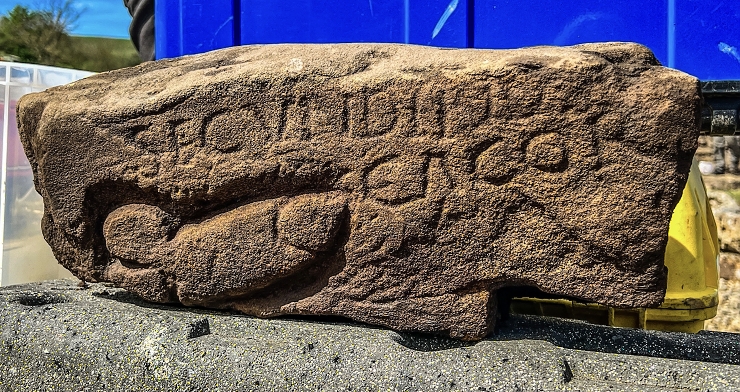Vždy když tu zídku vidím tak si vzpomenu na Černou Zmiji 
Ancient Roman Message from Hadrian's Wall: the 13th penis and a very personal insult
Categories: Nálezy nejenom s detektorem ve Velké Británii a Irsku
A stone carving of a penis with an inscription from the 3rd century was discovered at Hadrian's Wall. A soldier was also mocked in a way familiar to us today when someone from his neighbourhood took his name in an artistic representation of an insult.
The fortress of Vindolanda in the picturesque Northumberland countryside is a well of stories of everyday life during the Roman occupation of Britain. Many of the nearly 2,000-year-old artefacts in and around Hadrian's Wall have revealed intriguing human emotions and feelings over 100 years of research. Perhaps the most famous example is a handwritten invitation where the commander's wife invites another woman from a distant fortress to celebrate her birthday.
The most recent discovery at Vindolanda is a fascinating insight into the emotions of a soldier in the 3rd century. It was made on 19 May during voluntary excavations by Dylan Herbert, a retired biochemist from South Wales: 'I've been removing a lot of rubble all week and to be honest this stone has been in the way. I was pleased when I was told I could take it out of the trench. From the back it looked like all the others, a perfectly ordinary boulder, but when I turned it over I was startled to see some distinct letters. It was only after we had removed the mud that I realised the full extent of the inscription. I was absolutely delighted."
According to the archaeological team, this is the symbolic 13th penis uncovered at the excavation site. The Roman phallus is often seen as a good luck or fertility charm, certainly as a positive symbol. But in this case, the researchers say the author modified its meaning to suit his own purposes.It's the kind of "artwork" that so often appears on restroom doors and bus stop walls these days. Apparently it was "popular" even among the Romans 1700 years ago.
Apart from the explicit carving of a penis, the engraving on the face of the 40 cm long and 15 cm high stone reads: SECVNDINVS CACOR, which makes this graffiti a very personal insult. The Roman epigraphy specialists Dr Alexander Meyer, Alex Mullen and Roger Tomlin have recognised in the text a corrupted version of "Secundinus cacator". Loosely translated as "Secundinus s.cacator". The accompanying image adds to the power of the written curse.
"The discovery of the inscription, a direct message from the past, is on Roman excavationsalways a big event on a dig, but when we deciphered this message on the stone, it really raised our eyebrows," said Dr. Andrew Birley, head of the excavations and CEO of the Vindolanda Trust. "Its author clearly had a big problem with Secundine. He was confident enough to make his feelings about it publicly known in stone graffiti. I have no doubt that Secundinus must have been much less amused if he discovered the message more than 1,700 years ago."
The team of archaeologists hope that the symbolic 13th phallus will bring them good luck when they try to discover more artifacts in the coming months while exploring Hadrian's Wall.
Roman Nemec
Sources: itv.com, vindolanda.com

Hadrian's Wall celebrates 1900 years this year

The lucky finder with a penis on a stone

The stone depicts a penis and the inscription Secundinus cacor
The article is included in categories:




